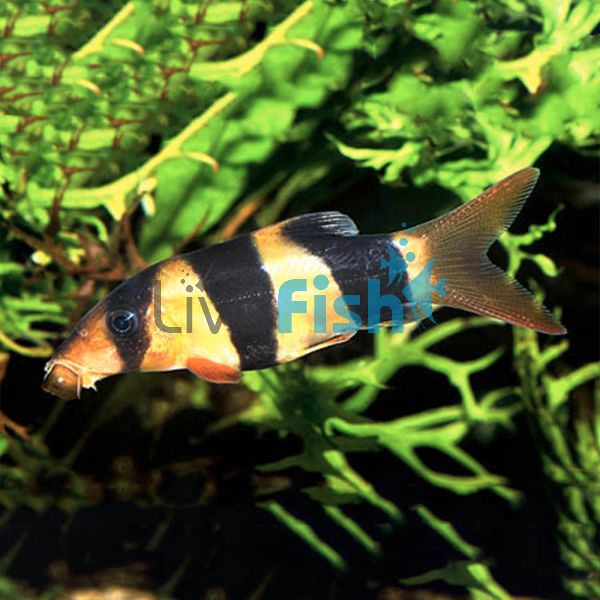Clown Loach 5cm
Clown loaches would have to be one of the most popular bottom-dwelling aquarium species, these colourful, contrasting, and incredibly large growing fish are a real treat for aquarists who can accommodate them. Clown loaches can be reclusive fish in small numbers however in a decent group these fish show off their active and personable nature which is part of the the reason they are so globally popular.
- Buy 10 for $21.50 each and save 20%
Clown Loach
Clown loaches would have to be one of the most popular bottom-dwelling aquarium species, these colourful, contrasting, and incredibly large growing fish are a real treat for aquarists who can accommodate them. Clown loaches can be reclusive fish in small numbers however in a decent group these fish show off their active and personable nature which is part of the the reason they are so globally popular.
Clown loaches likely get their name for the same reason clown fish get theirs. The orange and black stripes are a true characteristic of this species, the base body colour is a vibrant orange with the three, jet black stripes spaced out across the body. The fins and tip of the nose also develop deep red hues which adds another level of contrast. The body shape is also developed for the perfect bottom dweller, the belly is almost flat with a large, arched back. Essentially these fish are like over-sided corydoras and even carry the same sand-sifting behaviours which are part of the reason they are so useful to keep in the home aquarium. Clown loaches also often trick aquarists by playing dead however this is usually when they are sleeping which they can also do randomly throughout the day!
Breeding the Clown Loach is challenging and not commonly achieved in the home aquarium due to their specific breeding requirements and the difficulty in distinguishing males from females. In the wild, they breed in the monsoon season, and inducing similar conditions might trigger spawning in captivity. This most likely would involve heavy, cooler water changes, influx of feeding, and drop in PH.
Tank Recommendations for your Clown Loach
Clown loaches can get up to 30 cm however they generally max out at around 20 - 25. These are also fish that have to be kept in a group of 5 or more which means a tank that is at least 680 litres is needed. Clown loaches tend to be most active when the conditions of their environment are optimal.
Having a soft sandy substrate with plenty of caves, driftwood, tunnels, and hiding places encourages these fish to spend more time out in the open. Once they are happy in their system, they will even spend time happily swimming around higher in the water column as well. The water temperature should be kept between 24-30°C with a pH level of 6.5 - 7.5.
Suitable Tank Buddies
Clown Loaches are peaceful bottom dwellers who can get along with a variety of tank mates. Care should be taken to ensure they are getting fed and that the food is not being eaten before it reaches the bottom.
Usually Compatible
Peaceful community fish such as giant danios, Oscars, Angelfish, yoyo loaches, Corydoras, gourami and so much more.
Sometimes Compatible
Potentially small and slow-moving species like neon tetras or rasbora species which may be too small and just have the risk of being out-competed.
Rarely Compatible
Any super territorial species such as Dovii cichlids, large predatory catfish, or anything that has the risk of swallowing a clown loach. These fish have barbs on the side of their cheek plate which will get lodged in the predator's throat likely causing death in both fish. Clown Loaches are also master snail eaters and will demolish every snail in an aquarium regardless of species.
Feeding your Clown Loach
Clown Loaches accept a wide variety of foods. A balanced diet of quality sinking pellets, flakes, and occasional live or frozen foods like bloodworms or brine shrimp will keep them healthy. It may also be good to use a baster or feeding pipe to ensure food reaches the bottom of the aquarium. Doing a small dedicated feeding at night will also be great since these fish are mostly nocturnal.
| Scientific Name | Chromobotia Macracanthus |
|---|




